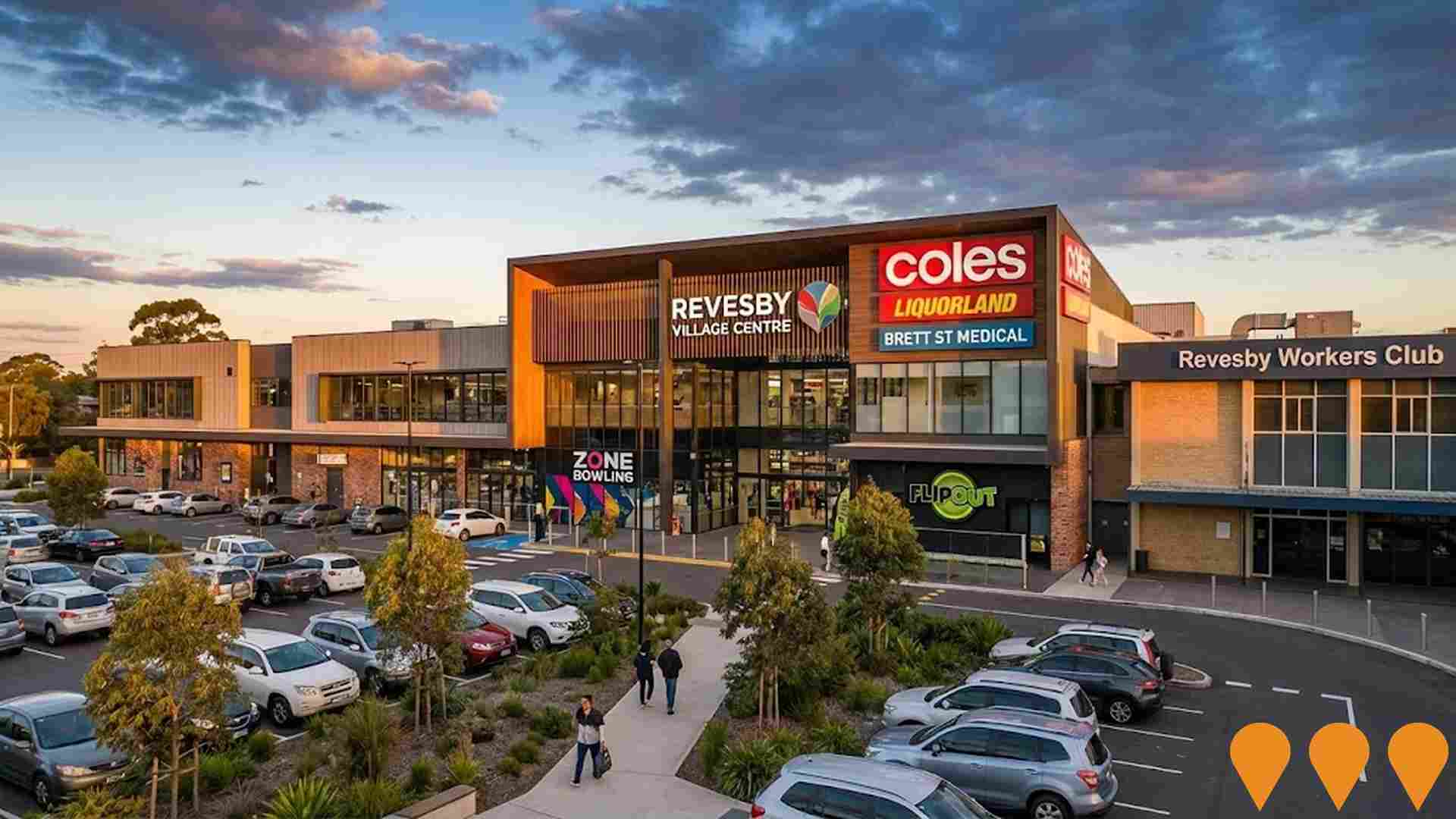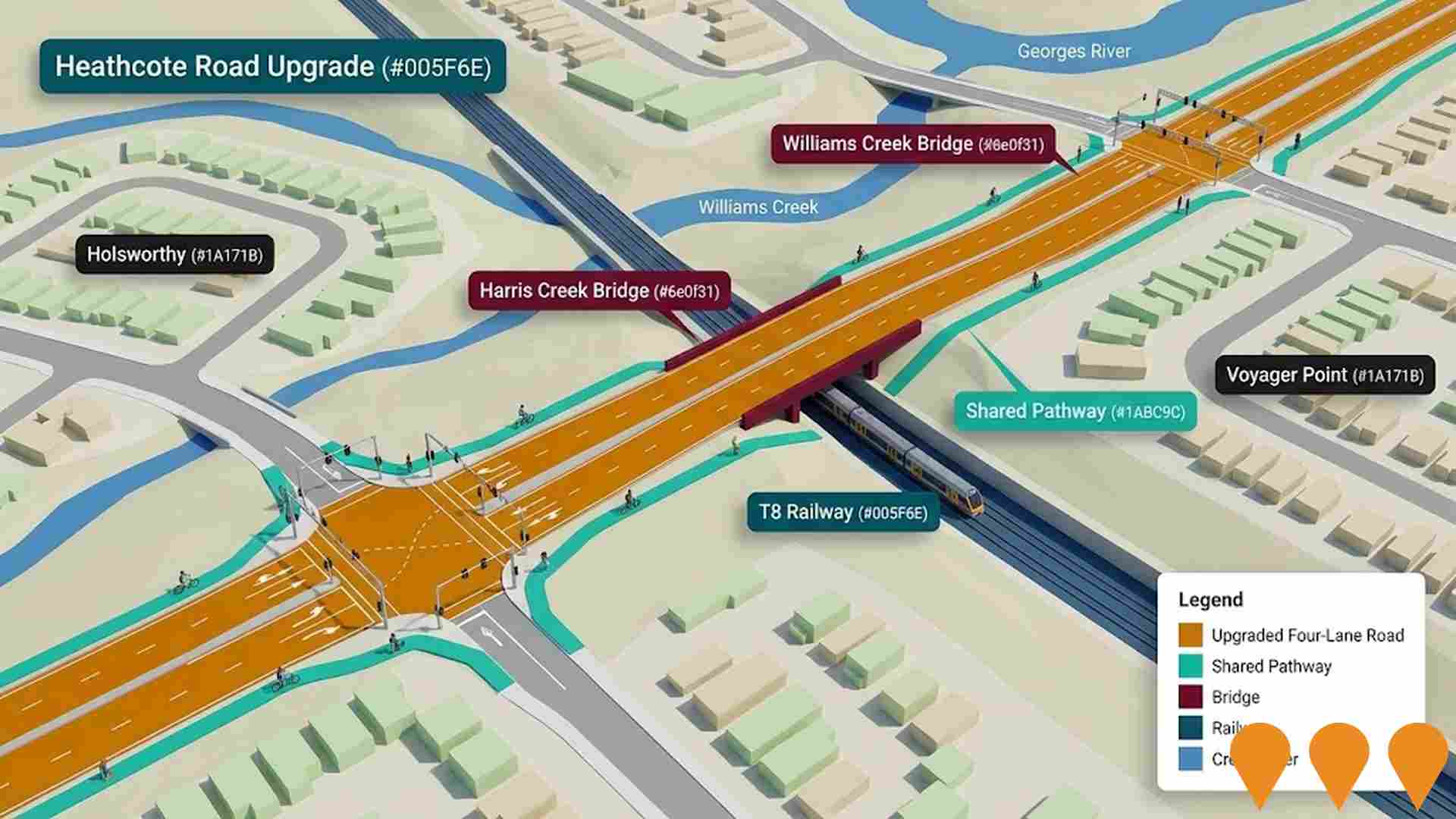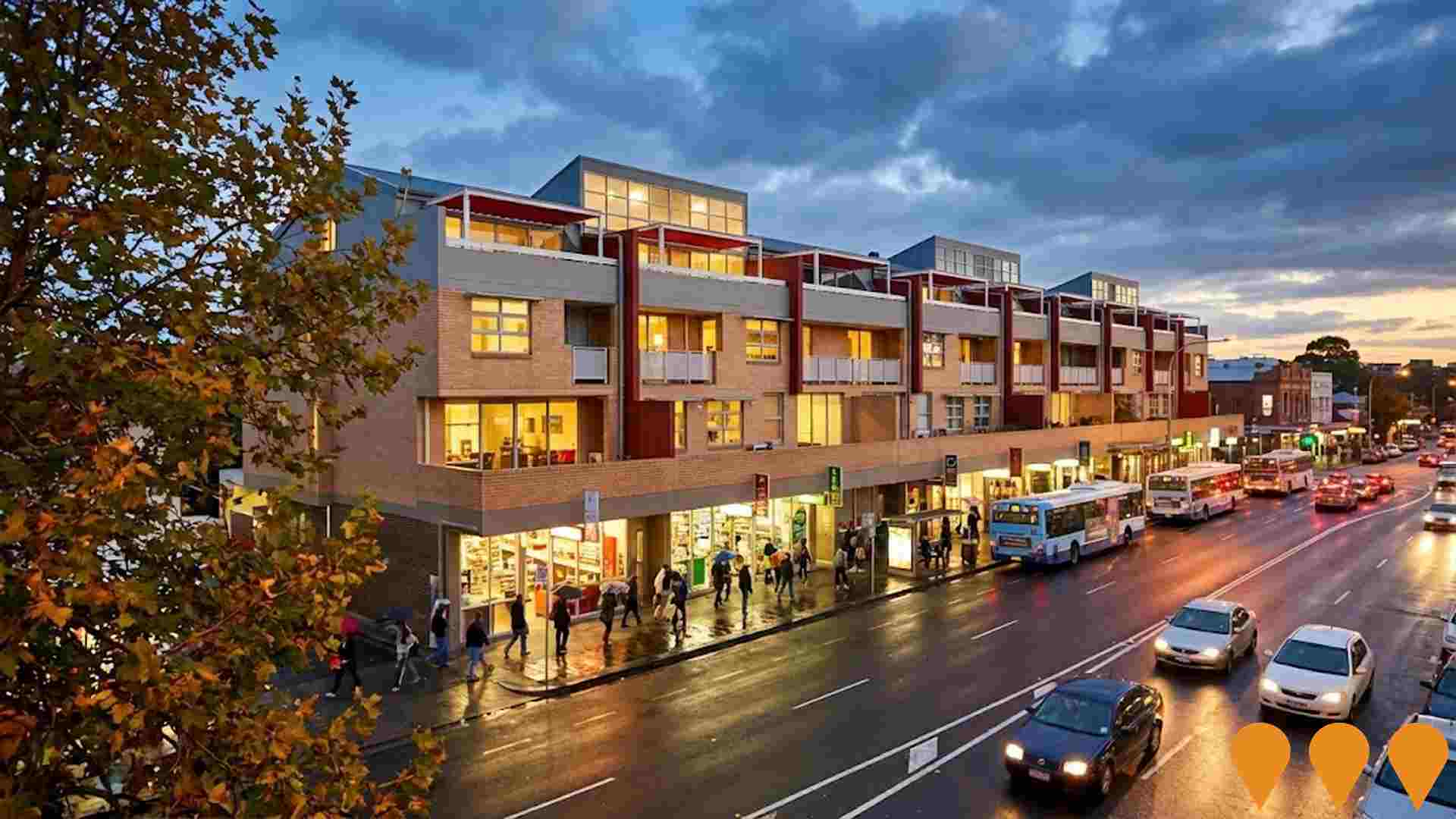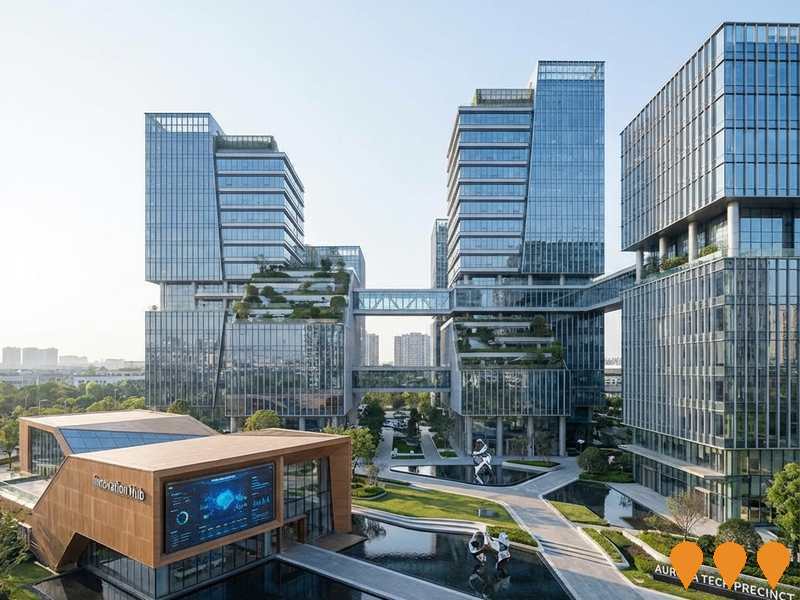Chart Color Schemes
est. as @ -- *
ABS ERP | -- people | --
2021 Census | -- people
Sales Activity
Curious about local property values? Filter the chart to assess the volume and appreciation (including resales) trends and regional comparisons, or scroll to the map below view this information at an individual property level.
Find a Recent Sale
Sales Detail
Population
Panania (South) - Picnic Point has seen population growth performance typically on par with national averages when looking at short and medium term trends
Panania (South) - Picnic Point's population is around 16,439 as of Aug 2025. This reflects an increase of 445 people since the 2021 Census, which reported a population of 15,994 people. The change is inferred from the estimated resident population of 16,439 from the ABS as of June 2024 and an additional 77 validated new addresses since the Census date. This level of population equates to a density ratio of 2,406 persons per square kilometer. Panania (South) - Picnic Point's growth rate of 2.8% since census positions it within 1.2 percentage points of the SA3 area's growth rate of 4.0%. Population growth for the area was primarily driven by overseas migration, contributing approximately 61.1% of overall population gains during recent periods.
AreaSearch is adopting ABS/Geoscience Australia projections for each SA2 area, released in 2024 with a base year of 2022. For areas not covered by this data, AreaSearch utilises NSW State Government's SA2 level projections, released in 2022 with a base year of 2021. Growth rates by age group from these aggregations are applied to all areas for years 2032 to 2041. Future population trends indicate an increase just below the median of national areas, with the area expected to expand by 1,259 persons to 2041 based on latest population numbers, reflecting a total increase of 7.6% over the 17 years.
Frequently Asked Questions - Population
Development
Recent residential development output has been above average within Panania (South) - Picnic Point when compared nationally
Panania South's Picnic Point has seen an average of 111 new dwelling approvals per year. Over the past five financial years, from FY2021 to FY2025558 homes were approved, with a further 20 approved in FY2026 as of now.
The area averages 0.8 people moving in for each dwelling built over these five years. This indicates that new supply is meeting or exceeding demand, providing ample buyer choice and capacity for population growth beyond current forecasts. The average construction cost value of new homes is $532,000. Comparatively, Panania South's Picnic Point has slightly more development than the Greater Sydney regional average over this five-year period, preserving reasonable buyer options while sustaining existing property demand. New development consists of 26% detached houses and 74% attached dwellings, a shift from the area's current housing composition of 73% houses.
This denser development provides accessible entry options appealing to downsizers, investors, and entry-level buyers. Panania South's Picnic Point has around 168 people per dwelling approval, indicating characteristics of a low-density area. By 2041, the area is expected to grow by 1,250 residents. With current construction levels, housing supply should adequately meet demand, creating favourable conditions for buyers while potentially enabling growth that exceeds current forecasts.
Frequently Asked Questions - Development
Infrastructure
Panania (South) - Picnic Point has very high levels of nearby infrastructure activity, ranking in the top 10% nationally
Changes to local infrastructure significantly impact an area's performance. AreaSearch identified thirteen projects likely to influence the region. Notable initiatives include Panania Library and Knowledge Centre, a three-storey mixed-use development at Tower Street comprising two commercial tenancies, 229 Tower Street Apartments, and Canterbury-Bankstown Walking City Project. The following list details those most relevant:.
Professional plan users can use the search below to filter and access additional projects.
INFRASTRUCTURE SEARCH
 Denotes AI-based impression for illustrative purposes only, not to be taken as definitive under any circumstances. Please follow links and conduct other investigations from the project's source for actual imagery. Developers and project owners wishing us to use original imagery please Contact Us and we will do so.
Denotes AI-based impression for illustrative purposes only, not to be taken as definitive under any circumstances. Please follow links and conduct other investigations from the project's source for actual imagery. Developers and project owners wishing us to use original imagery please Contact Us and we will do so.
Frequently Asked Questions - Infrastructure
Revesby Workers Club Redevelopment
$120 million club-led redevelopment delivering the Revesby Village Centre (anchored by Coles and Liquorland), a multi-level medical precinct (Brett St Medical), family entertainment with Zone Bowling and Flip Out, plus new links and facilities integrated with Revesby Workers Club. The Village Centre opened in 2015 and the broader redevelopment has been trading since, with ongoing leasing and operations.

UMA Centre Padstow Transformation Project
Conversion and expansion of the existing UMA Centre in Padstow into a modern indoor sports and community complex featuring multi-use indoor courts (soccer, basketball, volleyball), boxing and martial arts facilities, parking, accessible amenities, change rooms, storage and a flexible auditorium. Works have progressed through demolition and bulk excavation, with construction advancing from the basement slab stage.

Heathcote Road Upgrade - Infantry Parade to The Avenue
Major road upgrade duplicating 2.2km section of Heathcote Road to four-lane divided carriageway. Includes new bridges over Williams Creek, Harris Creek and T8 Airport railway line, upgraded intersections with traffic lights, and shared pathways for cyclists and pedestrians.

Amour Park Multipurpose Facility
Concept-stage multipurpose community recreation facility at Amour Park in Revesby, aligned with Council's Community Infrastructure Strategic Plan 2050 (Catchment 2) direction for a new multipurpose facility with a youth focus in the Revesby/Padstow area. Funding and delivery timing have not been set; current activity is strategic planning and concept development.

Canterbury-Bankstown Walking City Project
Active transport network creating high-quality pedestrian infrastructure across Canterbury-Bankstown. Includes new footpaths, improved crossings, cycling paths, and connectivity between transport hubs, town centres, and residential areas to encourage healthy lifestyles and reduce car dependency.

Panania Library and Knowledge Centre
A new state-of-the-art multipurpose library and knowledge centre replacing the existing ageing library and seniors centre. Designed by award-winning architects Lahznimmo, the ~1000sqm facility includes modern library spaces, dedicated children's area, private study and lounging areas, hireable community room (70 people) with kitchenette, meeting rooms, public plaza, enhanced green space, covered outdoor areas, and public toilets. Funded by the NSW Government ($5M WestInvest) and City of Canterbury Bankstown (total project value $10M).

Weston Street Affordable Housing
Demolition of existing structures at 171 Weston Street and 2-6 Hinemoa Street, and construction of a 4-5 storey affordable housing residential flat building comprising 42 apartments over basement carparking.

Uranus Road Culvert Upgrade
Council is upgrading the stormwater culvert where Uranus Road crosses Little Salt Pan Creek to reduce high-risk flooding. Works include removing large concrete pipes, relocating a gas line, creek bank realignment and rock armouring, a maintenance access track, and installing a new three-cell box culvert. Construction began late September 2025 with anticipated completion by April 2026 (weather permitting).

Employment
The employment environment in Panania (South) - Picnic Point shows above-average strength when compared nationally
Panania South - Picnic Point has an educated workforce with professional services well represented. Unemployment rate is 2.9% and estimated employment growth over the past year is 2.4%.
As of June 2025, there are 9,561 residents in work with an unemployment rate of 1.3%, below Greater Sydney's rate of 4.2%. Workforce participation is at 60.0%, on par with Greater Sydney. Leading employment industries include education & training, health care & social assistance, and construction. Education & training has notable concentration, being 1.4 times the regional average.
Professional & technical employs 8.8% of local workers, below Greater Sydney's 11.5%. The area offers limited local employment opportunities as indicated by Census working population vs resident population count. From June 2024 to June 2025, employment levels increased by 2.4%, labour force by 2.7%, leading to a 0.3 percentage point rise in unemployment. Greater Sydney recorded similar trends with employment growth of 2.6% and unemployment rising 0.3%. Jobs and Skills Australia's national employment forecasts from May 2025 project national employment expansion by 6.6% over five years and 13.7% over ten years, varying between industry sectors. Applying these projections to Panania South - Picnic Point's employment mix suggests local growth of approximately 6.6%% over five years and 13.5% over ten years.
Frequently Asked Questions - Employment
Income
Income metrics indicate excellent economic conditions, with the area achieving higher performance than 75% of national locations assessed by AreaSearch
AreaSearch's aggregation of latest postcode level ATO data for financial year 2022 shows Panania (South) - Picnic Point had a median income among taxpayers of $57,164 and an average income of $70,825. These figures are above the national averages of $56,994 and $80,856 respectively for Greater Sydney. Based on Wage Price Index growth of 12.61% since financial year 2022, estimated median and average incomes as of September 2025 would be approximately $64,372 and $79,756 respectively. According to 2021 Census figures, household, family, and personal incomes in Panania (South) - Picnic Point cluster around the 69th percentile nationally. The largest income segment comprises 28.2% earning between $1,500 and $2,999 weekly, with 4,635 residents falling into this bracket. This is similar to regional levels where 30.9% occupy this range. Higher earners represent a substantial presence, with 34.3% exceeding $3,000 weekly. High housing costs consume 16.7% of income, but strong earnings place disposable income at the 75th percentile. The area's SEIFA income ranking places it in the 7th decile.
Frequently Asked Questions - Income
Housing
Panania (South) - Picnic Point is characterized by a predominantly suburban housing profile, with above-average rates of outright home ownership
In Panania (South) - Picnic Point, as per the latest Census, 72.6% of dwellings were houses while 27.3% comprised semi-detached homes, apartments, and other types. This compares to Sydney's metropolitan area which had 61.5% houses and 38.4% other dwellings. Home ownership in Panania (South) - Picnic Point stood at 36.2%, with mortgaged properties at 39.7% and rented ones at 24.1%. The median monthly mortgage repayment was $2,695, higher than Sydney's average of $2,240. Median weekly rent in the area was $480 compared to Sydney's $425. Nationally, Panania (South) - Picnic Point had significantly higher mortgage repayments at $2,695 versus Australia's average of $1,863 and substantially higher rents at $480 against the national figure of $375.
Frequently Asked Questions - Housing
Household Composition
Panania (South) - Picnic Point features high concentrations of family households, with a lower-than-average median household size
Family households account for 78.3% of all households, consisting of 43.1% couples with children, 22.9% couples without children, and 11.3% single parent families. Non-family households make up the remaining 21.7%, with lone person households at 20.0% and group households comprising 1.6% of the total. The median household size is 2.9 people, which is smaller than the Greater Sydney average of 3.1 people.
Frequently Asked Questions - Households
Local Schools & Education
Panania (South) - Picnic Point performs slightly above the national average for education, showing competitive qualification levels and steady academic outcomes
In Panania (South) - Picnic Point, 28.6% of residents aged 15+ hold university degrees, compared to Greater Sydney's 38.0%. Bachelor degrees are most common at 19.9%, followed by postgraduate qualifications at 6.5% and graduate diplomas at 2.2%. Vocational credentials are held by 33.0% of residents aged 15+, with advanced diplomas at 11.5% and certificates at 21.5%. Educational participation is high, with 29.8% of residents currently enrolled in formal education: 10.6% in primary, 8.6% in secondary, and 5.1% in tertiary education.
The area has a robust network of 8 schools educating approximately 4,168 students, with typical Australian school conditions (ICSEA: 1036) and balanced educational opportunities. There are 5 primary and 3 secondary schools serving distinct age groups. Panania (South) - Picnic Point functions as an education hub with 25.4 school places per 100 residents, significantly above the regional average of 16.8, attracting students from surrounding communities.
Frequently Asked Questions - Education
Schools Detail
Nearby Services & Amenities
Transport
Transport servicing is good compared to other areas nationally based on assessment of service frequency, route connectivity and accessibility
Panania (South) - Picnic Point has 86 active public transport stops. These are a mix of train and bus stations serviced by 39 routes. The total weekly passenger trips provided is 2,947.
Residents have excellent transport accessibility, with an average distance of 150 meters to the nearest stop. There are approximately 421 daily trips across all routes, equating to about 34 weekly trips per individual stop.
Frequently Asked Questions - Transport
Transport Stops Detail
Health
The level of general health in Panania (South) - Picnic Point is notably higher than the national average with prevalence of common health conditions low among the general population and nearer the nation's average across older, at risk cohorts
Panania South's Picnic Point shows better-than-average health outcomes. Common health conditions' prevalence is low among its general population and closer to national averages for older adults at risk.
Private health cover rate is high, around 55% (about 9,041 people), compared to Greater Sydney's 48.6%. The most prevalent medical conditions are arthritis (7.5%) and asthma (6.8%). Around 73.2% of residents claim no medical ailments, slightly lower than Greater Sydney's 75.8%. About 17.5% of residents are aged 65 or over (2,881 people), higher than Greater Sydney's 15.8%. Health outcomes among seniors require more attention despite being above average.
Frequently Asked Questions - Health
Cultural Diversity
Panania (South) - Picnic Point was found to be more culturally diverse than the vast majority of local markets in Australia, upon assessment of a range of language and cultural background related metrics
Panania (South) - Picnic Point had a higher cultural diversity than most local markets, with 27.6% of its population born overseas and 33.1% speaking languages other than English at home. Christianity was the predominant religion in Panania (South) - Picnic Point, making up 63.8% of people, compared to 46.5% across Greater Sydney. The top three ancestry groups were Australian (19.8%, higher than the regional average of 14.1%), English (19.1%, also higher than the regional average of 11.3%), and Other (11.5%, notably lower than the regional average of 20.1%).
Notably, Lebanese ethnicity was overrepresented at 5.6% compared to the regional average of 14.9%, Macedonian at 2.0% versus 1.7%, and Greek at 5.2% against a regional average of 3.4%.
Frequently Asked Questions - Diversity
Age
Panania (South) - Picnic Point's population is slightly older than the national pattern
The median age in Panania (South) - Picnic Point is 39 years, which is higher than Greater Sydney's average of 37 years, but close to the national average of 38 years. The 55-64 cohort is over-represented at 11.9% compared to Greater Sydney's average, while the 25-34 age group is under-represented at 10.1%. Post-2021 Census data shows that the 15-24 age group has grown from 12.4% to 13.9%, and the 25-34 cohort has declined from 11.0% to 10.1%. Population forecasts for 2041 indicate significant demographic changes, with the 75-84 age group expected to grow by 55% (520 people), reaching 1,466 from 945. Residents aged 65 and older are anticipated to represent 64% of this growth. Conversely, the 0-4 and 35-44 cohorts are projected to experience population declines.


